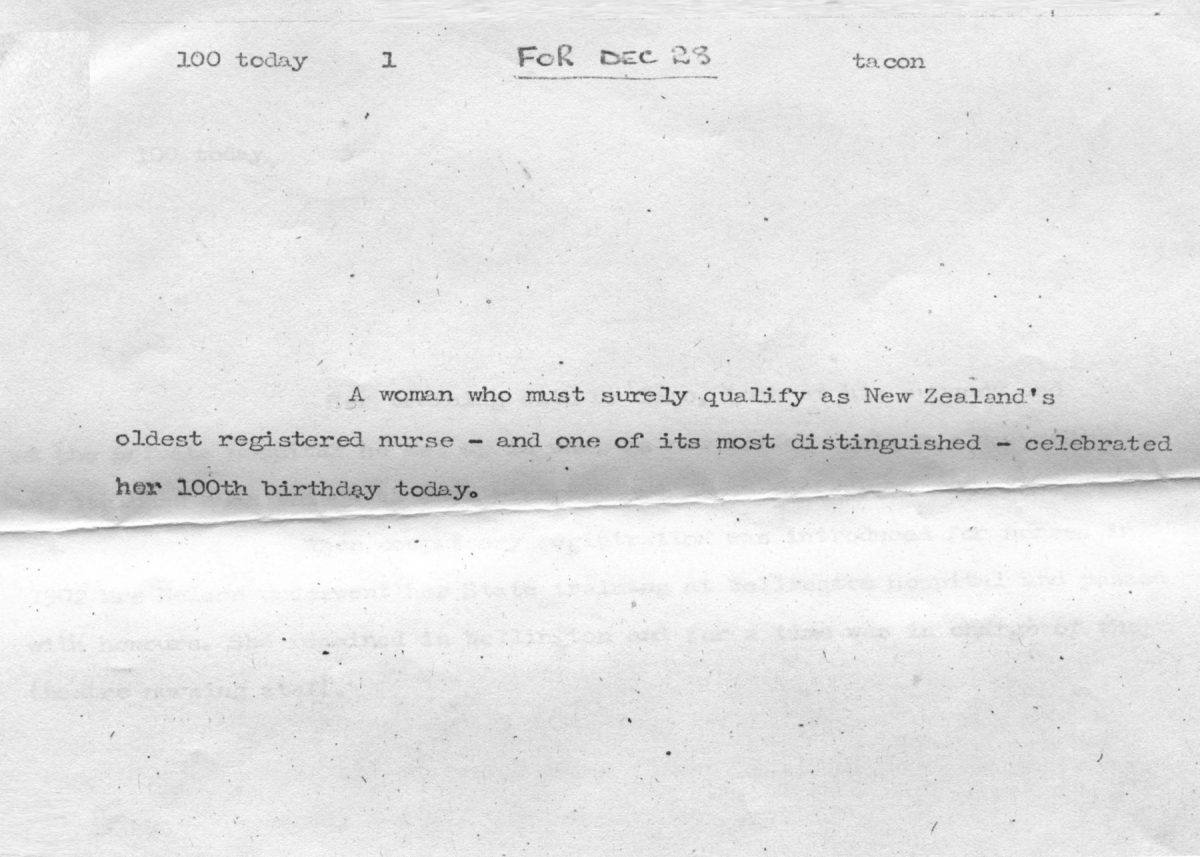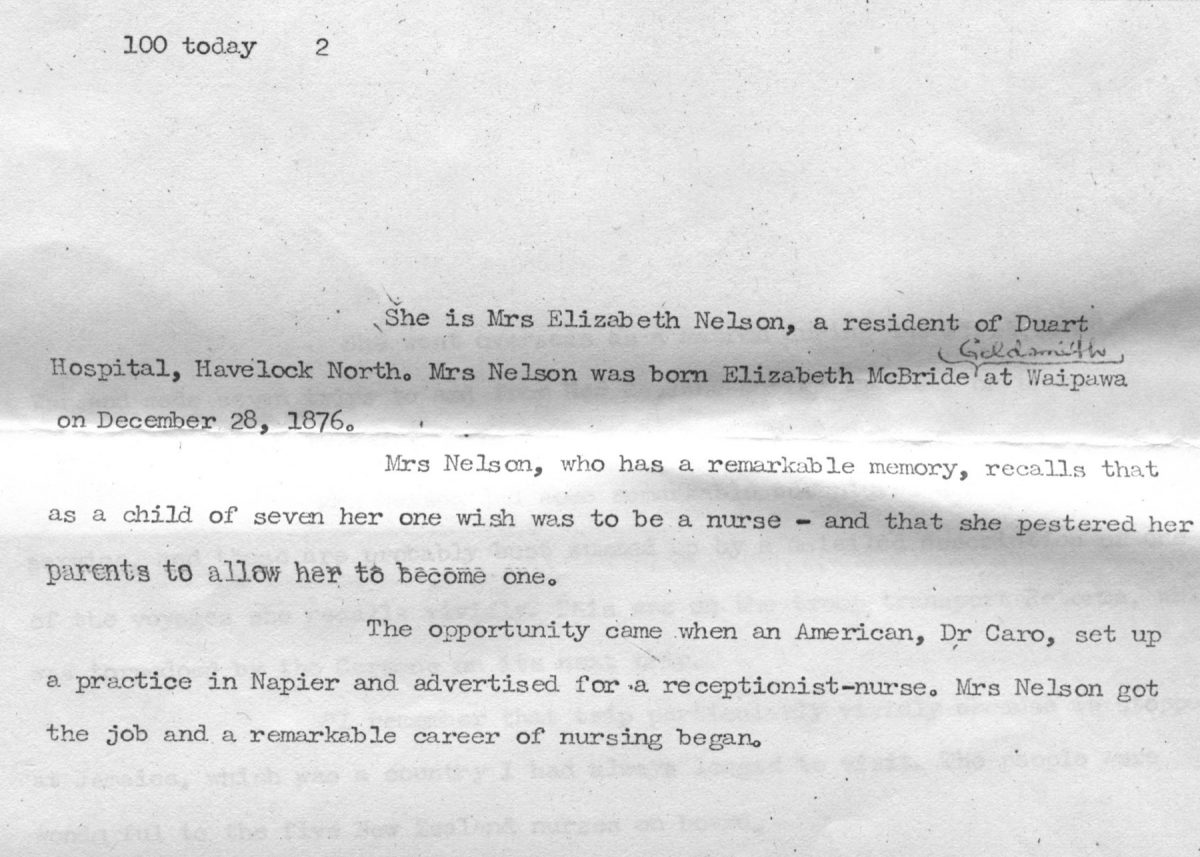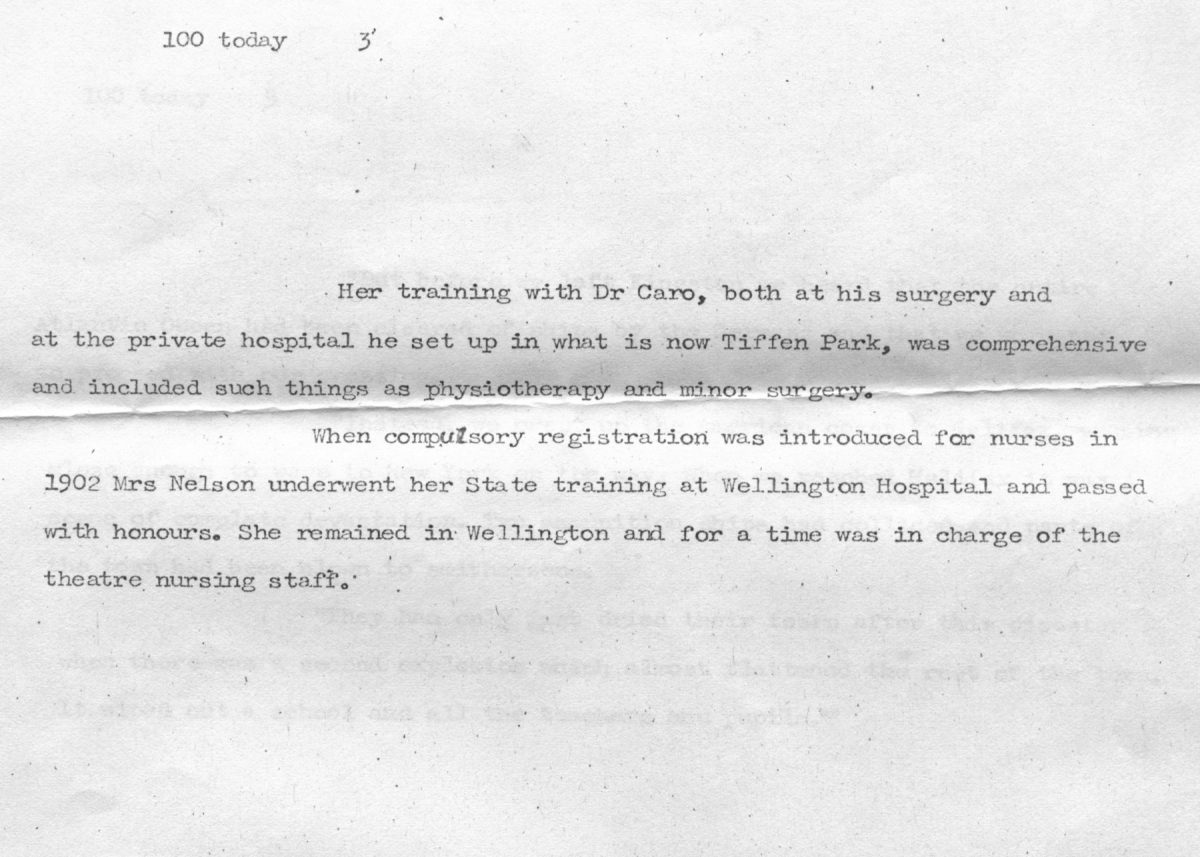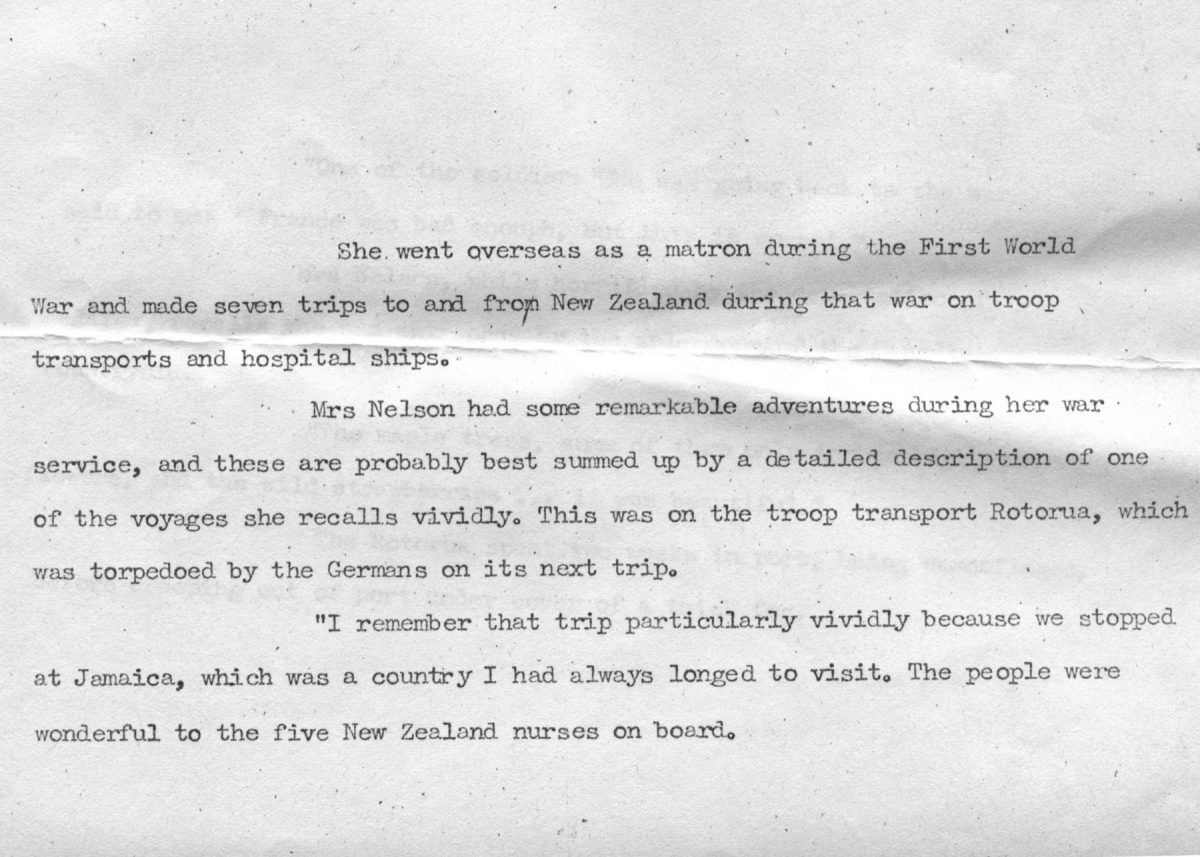Elizabeth Nelson 100
Original digital file
WalmsleyM826_ElizabethNelson100Today.pdf
Non-commercial use

This work is licensed under a Attribution-NonCommercial 3.0 New Zealand (CC BY-NC 3.0 NZ).
Commercial Use
Please contact us for information about using this material commercially.✖
Can you help?
The Hawke's Bay Knowledge Bank relies on donations to make this material available. Please consider making a donation towards preserving our local history.
Visit our donations page for more information.
Subjects
Format of the original
Typed documentPeople
- Dr Caro
- Elizabeth McBride Nelson, nee Goldsmith
- George Nelson
- William Nelson



















Do you know something about this record?
Please note we cannot verify the accuracy of any information posted by the community.